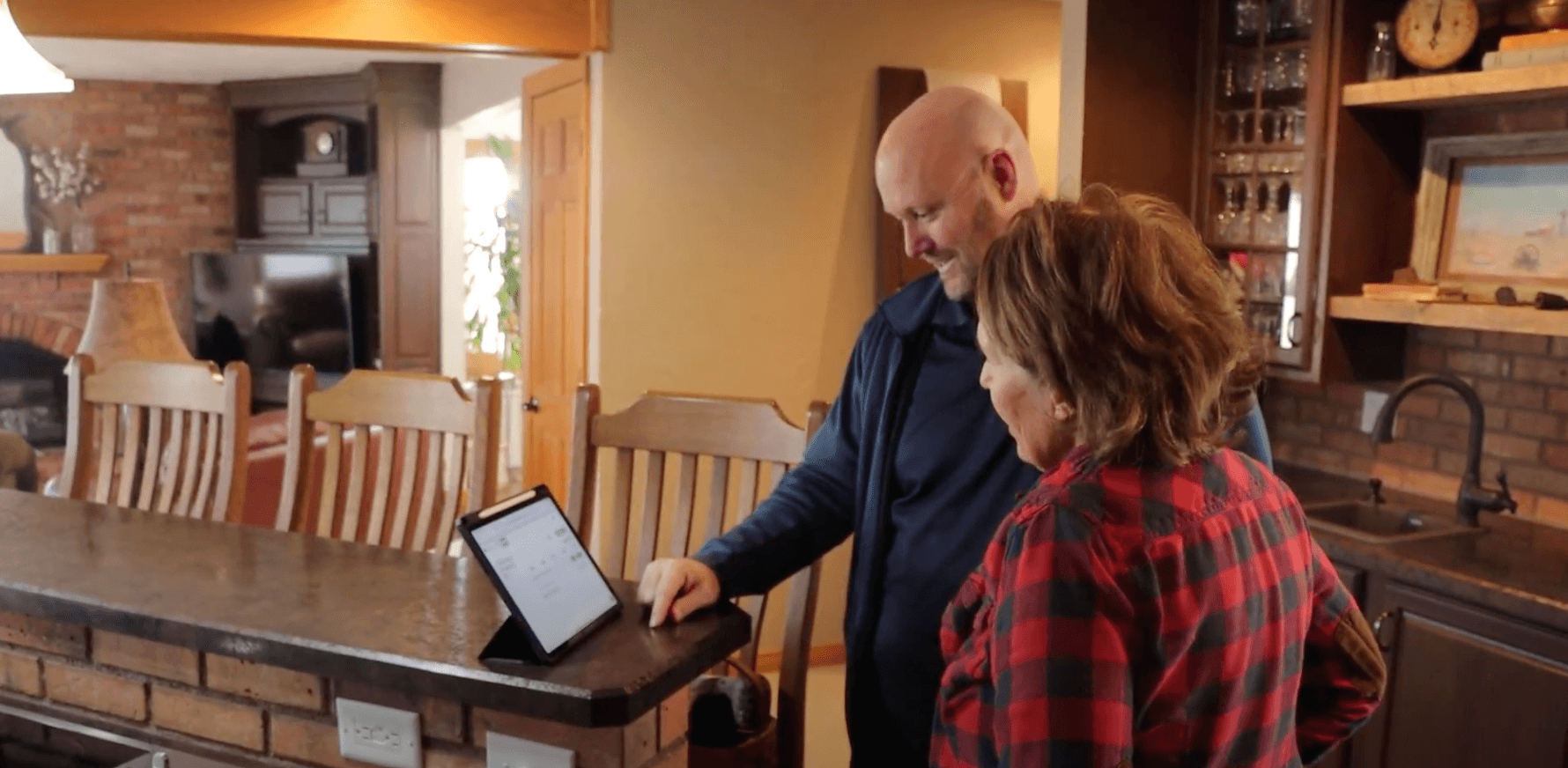9 Common Mistakes for Cleaning Wood Cabinets
September 5th, 2024
7 min read
-Sep-05-2024-06-58-29-7906-PM.png?width=800&height=418&name=Blog%20Post%20Image%20Size%20(1)-Sep-05-2024-06-58-29-7906-PM.png)
Kitchen cabinets are a significant investment in your home, and proper care is essential to maintain their beauty and functionality. Many Omaha homeowners unknowingly damage their cabinets through improper cleaning techniques.
At Brush & Roll Painting, we’ve been a trusted cabinet painting company in Omaha since 1996. We've seen it all when it comes to cabinet mishaps. From peeling paint to color fading, we've rescued more cabinets than we can count.
Not everyone knows how to properly clean kitchen cabinets, so in this article, we will go over the common mistakes we have found and give you the best way to go about the job (hint: it’s much more simpler than you think!).
By the time you finish this article, you'll be armed with the knowledge to keep your cabinets looking fabulous without accidentally turning them into modern art. You'll learn the dos and don'ts of cabinet cleaning and how to spot when it's time to paint your cabinets.
Common Cabinet Cleaning Mistakes
1. Using Abrasive Cleaning Materials
Mistake: Many homeowners, when faced with stubborn stains or built-up grime, reach for scouring pads, steel wool, or other abrasive materials. The logic seems sound – if something's stuck on, scrub it off, right? Unfortunately, this approach can cause significant damage to your cabinets.
Cabinet finishes, whether paint, stain, or laminate, are designed to be durable but not indestructible. Abrasive materials can create micro-scratches in the finish. Over time, these scratches can accumulate, dulling the surface and making it more susceptible to staining and moisture damage. In severe cases, aggressive scrubbing can even wear through the finish entirely, exposing the underlying material.
Correct Method: Instead of abrasive materials, opt for soft, lint-free cloths or sponges. Microfiber cloths are particularly effective as they can trap dirt and grime without scratching the surface. For tougher spots, the key is to let your cleaning solution do the work (more on that in the next section) rather than relying on elbow grease.
Keep a set of cloths specifically for cabinet cleaning to avoid cross-contamination from other cleaning tasks.
2. Applying Harsh Cleaning Solutions
Mistake: While cleaning your kitchen, you may think to turn to strong, all-purpose cleaners, bleach-based products, or other harsh chemicals. The thinking is often that stronger equals better when it comes to cleaning power.
Cabinet finishes are designed to resist some wear and tear, but they're not resistant to chemical damage. Harsh cleaners can strip the finish from your cabinets, leading to discoloration, peeling, or even bare spots. This is particularly problematic for wood cabinets, as it can expose the raw wood to moisture and further damage.
Correct Method: For most cleaning tasks, warm water and a dish soap are your best friends. It's gentle yet effective at removing everyday dirt and grime. This simple solution is powerful enough to cut through grease and grime without risking damage to your cabinets.
If you're dealing with extremely grimy cabinets, you can create a stronger solution by mixing equal parts warm water, white vinegar, and dish soap. Always test any new cleaning solution on an inconspicuous area first.
-Sep-05-2024-06-59-33-1188-PM.png?width=655&height=342&name=Blog%20Post%20Image%20Size%20(2)-Sep-05-2024-06-59-33-1188-PM.png)
3. Over Saturating Cabinets
Mistake: In an effort to clean thoroughly, some homeowners apply too much water or cleaning solution to their cabinets. They might spray cleaner directly onto the cabinets or use a cloth that's dripping wet.
Excess moisture is the enemy of most cabinet materials, especially wood. When water seeps into seams, joints, or any exposed wood, it can cause swelling, warping, or delamination of veneers. In severe cases, it can even lead to mold growth inside the cabinet structure.
Correct Method: Always use a damp cloth, not a wet one. Wring out your cleaning cloth thoroughly before applying it to the cabinets. Instead of spraying cleaner directly on the cabinets, apply it to your cloth first. After cleaning, immediately dry the cabinets with a soft, dry, lint-free cloth to remove any remaining moisture.
Pay extra attention to areas around the sink and dishwasher, as these are more likely to be exposed to moisture regularly.
4. Neglecting Regular Maintenance
Mistake: Many homeowners only clean their cabinets when they notice visible grime or during seasonal deep cleans. This "out of sight, out of mind" approach can lead to long-term problems.
Dust, grease, and grime accumulate overtime on cabinet surfaces. When left for extended periods, this buildup can become harder to remove, often leading to the use of more aggressive cleaning methods (which we now know can damage the cabinets). Additionally, this buildup can act like sandpaper when you do clean, potentially scratching the finish.
Areas around handles or knobs especially can get built up with dirt and grime. This is just from the natural oils on ours hands alone. Not to mention the other substances from substances that can get on the cabinets from cooking.
Correct Method: Implement a regular cleaning schedule. Wipe down your cabinet doors and drawer faces monthly with a damp cloth and dish soap, focusing on high-use areas like handle and areas around the stove. Don't forget the top and sides of the drawers and doors!
Perform a more thorough clean every few months for inside the cabinet doors and drawers This routine prevents buildup and makes each cleaning session quicker and easier.
Keep a microfiber cloth hanging in your kitchen for quick wipe-downs. This makes it easy to clean spills or splatters immediately, preventing them from hardening or staining.
5. Aggressive Scrubbing of Stains
Mistake: When faced with stubborn stains or sticky spots, some homeowners resort to aggressive scrubbing, thinking that more pressure will remove the stain faster.
While it might seem effective in the moment, aggressive scrubbing can damage the cabinet finish, creating worn spots or scratches that are more noticeable than the original stain. This is especially true for painted cabinets, where vigorous scrubbing can remove the paint altogether.
Correct Method: For tough stains, patience is key. Apply your gentle cleaning solution (warm water with a bit of dish soap) to the spot and let it sit for a few minutes. This gives the cleaner time to break down the grime or stain, making it easier to wipe away without aggressive scrubbing.
For extra stubborn spots, you can use a soft-bristled toothbrush to gently work the cleaner into the stain, but be careful not to apply too much pressure.
For oil-based stains (like cooking grease), a paste made from baking soda and water can be effective. Apply it to the stain, let it sit for a few minutes, then wipe away gently.
6. Using the Wrong Cleaning Pattern
Mistake: Cleaning cabinets haphazardly or without a system can lead to missed spots and inefficient cleaning. Some homeowners might clean in a circular motion, which can leave streaks on the finish.
Inconsistent cleaning patterns can result in some areas being over-cleaned while others are neglected. This can lead to uneven wear on the cabinet finish over time. Additionally, cleaning in circles can sometimes create noticeable swirl marks, especially on high-gloss finishes.
Correct Method: Adopt a systematic approach to cleaning your cabinets. Start at the top and work your way down, ensuring that any drips or fallen debris get cleaned up as you go. This prevents you from having to re-clean areas.
When wiping, use straight, overlapping strokes rather than circular motions. For vertical surfaces, wipe from top to bottom. For horizontal surfaces, wipe in the direction of the wood grain if applicable. This method ensures even cleaning and helps avoid streaking.
Don't forget often-overlooked areas like the tops of cabinets, the insides of doors, and any decorative molding or hardware.
-Sep-05-2024-07-01-44-3883-PM.png?width=582&height=304&name=Blog%20Post%20Image%20Size%20(3)-Sep-05-2024-07-01-44-3883-PM.png)
7. Applying Wax-Based Products or Silicone Sprays on Cabinets
Mistake: In an attempt to add shine or protection to their cabinets, some homeowners use furniture polish, wax-based products, or silicone sprays.
While these products might provide a temporary shine, they can actually cause long-term issues. Wax and silicone-based products can build up over time, attracting dust and dirt and making future cleaning more difficult. They can also interfere with adhesion if you ever need to refinish or repaint your cabinets.
Correct Method: Stick to the simple cleaning solutions mentioned earlier - warm water or a mixture of warm water and mild dish soap. If you feel your cabinets need extra protection, you may need to consider a clear protectant coat or to refinish or paint the cabinets completely.
If you've been using wax or silicone-based products and want to switch to a better care routine, you may need to deep clean your cabinets first to remove any buildup. A solution of warm water and dish soap, followed by a thorough rinse and dry, can help remove most residues.
8. Mixing Cabinet Cleaning Products
Mistake: In an attempt to create a more powerful cleaning solution, some homeowners mix different cleaning products together.
Mixing cleaning products can be dangerous. Some combinations can create toxic fumes or chemical reactions that are harmful to your health. Additionally, mixed solutions can be unpredictable and may damage your cabinet finish in ways that individual products wouldn't.
Correct Method: Never mix cleaning products. Stick to one gentle cleaning solution at a time, preferably just warm water or water with a small amount of dish soap. If you feel you need a stronger cleaner for a particular job, choose a single product that's appropriate for your cabinet material and follow the manufacturer's instructions carefully.
If you're dealing with a tough cleaning job that your regular solution isn't handling, it's better to consult with a professional or the cabinet manufacturer for advice rather than experimenting with mixing products.
Pro Tip: Keep your cleaning routine simple. In most cases, warm water and a soft cloth are all you need for regular maintenance. Save stronger cleaning solutions for occasional deep cleans, and always test them in an inconspicuous area first.
9. Ignoring Signs of Wear and Tear
Mistake: Many homeowners continue their regular cleaning routines even when their cabinets are showing signs of significant wear or damage.
Cabinets with compromised finishes - whether from wear, water damage, or other issues - are more susceptible to further damage from even gentle cleaning. Continuing to clean damaged areas can enhance existing problems, potentially leading to more extensive (and expensive) repairs down the line.
Correct Method: Regularly inspect your cabinets for signs of wear and tear. Look for issues like peeling finish, deep stains, water damage, or loose hardware. If you notice these problems, it's time to consider professional intervention. A fresh coat of paint, refinishing, or even partial replacement might be necessary to restore your cabinets.
In the meantime, adjust your cleaning routine for damaged areas. Be extra gentle, use less moisture, and avoid applying any products that might seep into damaged areas.
Prevention is key. By following proper cleaning and maintenance routines, you can significantly extend the life of your cabinets and avoid many common wear and tear issues.
Cleaning Your Kitchen Cabinets
By avoiding these common cleaning mistakes, you can significantly extend the life and maintain the beauty of your kitchen cabinets. Remember, gentle and regular care is key to keeping your cabinets in excellent condition.
Proper cabinet care is an investment in your home. While it might seem like extra work, the time you spend maintaining your cabinets now can save you from costly repairs or replacements in the future. Plus, well-maintained cabinets contribute to the overall beauty and value of your kitchen.
If you find that your cabinets need more than just cleaning, or if you're considering a kitchen cabinet update, Brush & Roll Painting is here to help. Our team of experts can provide professional cabinet painting and refinishing services to give your kitchen a long lasting, easy to clean, fresh, new look.
Want to learn more about how we can help transform your kitchen? Click the button below to get a quote from Brush & Roll Painting. Let us help you keep your Omaha home looking its best!
If you think you’re ready for a cabinet project or just need a reminder to clean your cabinets, click the button below to download your cabinet project checklist.
Cabinets are the heart of your kitchen, so painting them is an investment. You want to be sure that you are confident and comfortable through the whole process, so you don’t make any costly mistakes.
Kaylea is the Brush & Roll Painting Content Manager. Kaylea is a Journalism and Media Communications summa cum laude graduate with a minor in Marketing from the University of Nebraska at Omaha. Kaylea manages the marketing for Brush & Roll Painting.
















-Jul-23-2025-02-21-33-5468-PM.png?width=800&height=418&name=Blog%20Post%20Image%20Size%20(2)-Jul-23-2025-02-21-33-5468-PM.png)




-Oct-22-2025-01-39-19-5208-PM.png?width=800&height=418&name=Blog%20Post%20Image%20Size%20(1)-Oct-22-2025-01-39-19-5208-PM.png)





